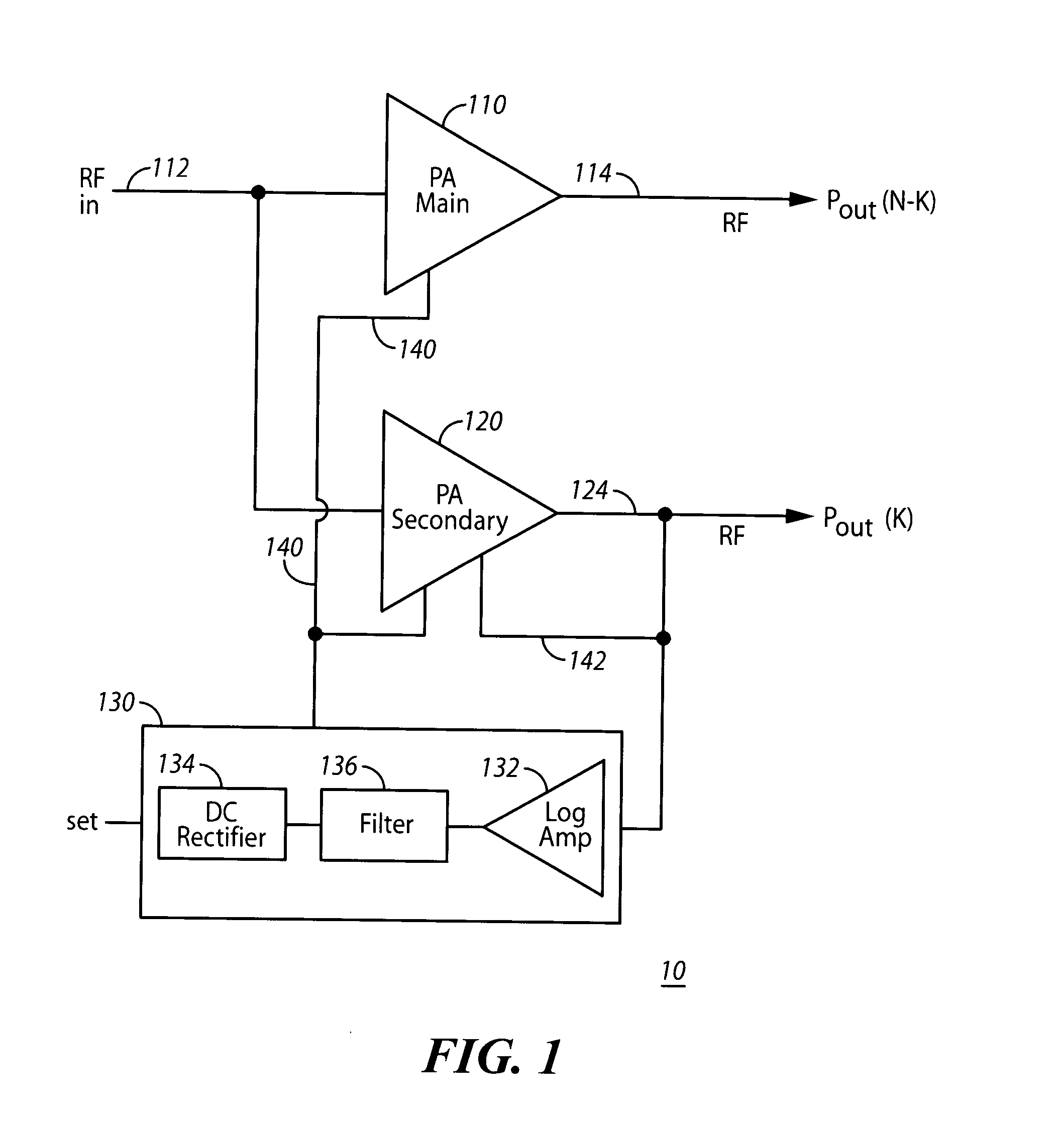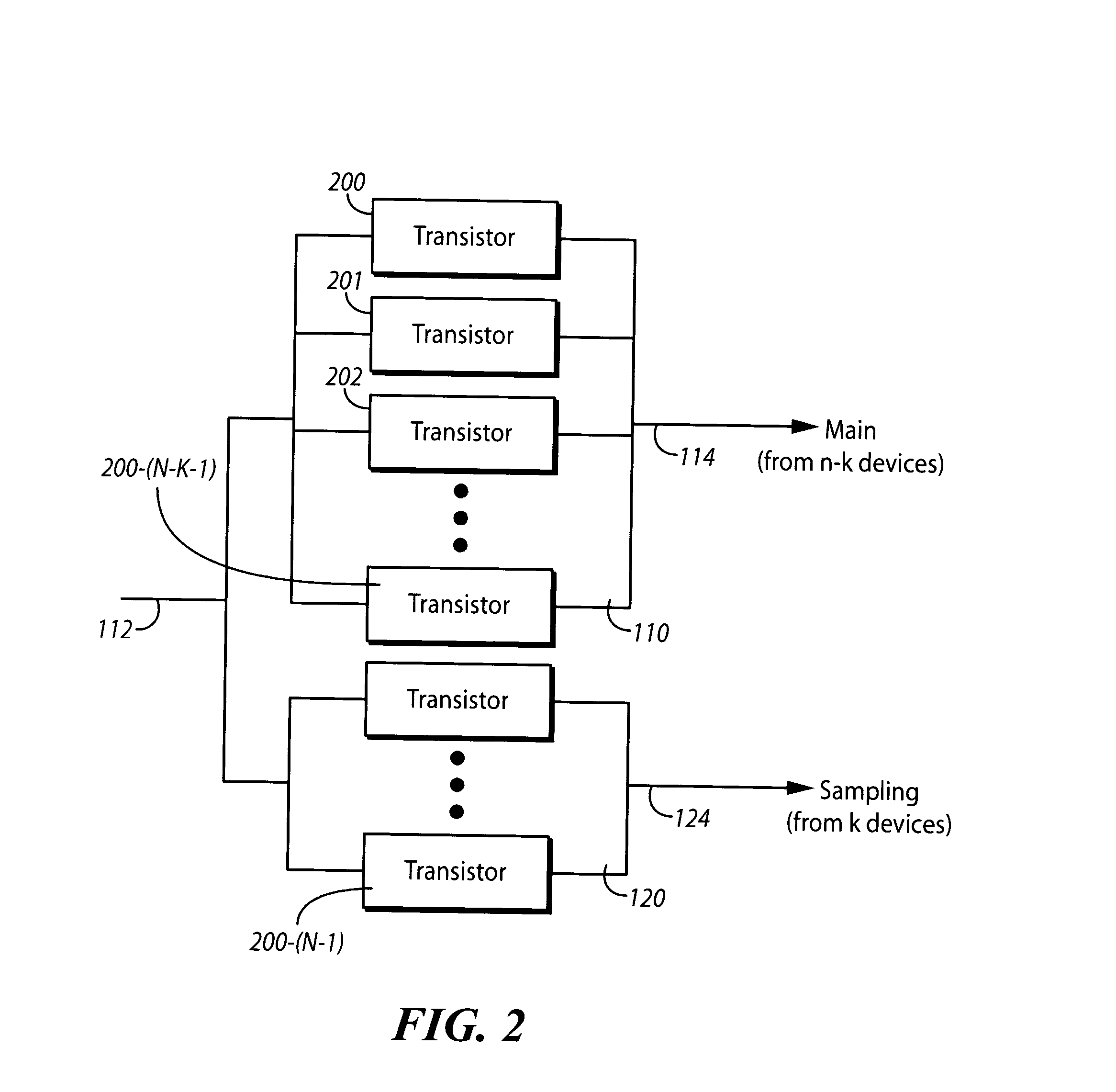Radio frequency power detecting circuit and method therefor
a technology of radio frequency power detection and detection circuit, which is applied in the direction of amplification control, electrical equipment, transmission, etc., can solve the problems of increasing the cost of battery power, and increasing the physical size of electronic devices and their associated batteries
- Summary
- Abstract
- Description
- Claims
- Application Information
AI Technical Summary
Problems solved by technology
Method used
Image
Examples
Embodiment Construction
The present invention relates to an efficient technique and structure for detecting transmit power associated with a power amplifier. In accordance with certain embodiments of the invention, a circuit contains an array of coupled transistors in two power amplifiers, all resident on a single semiconductor die, and a log-detector circuit. The main power amplifier contains the larger array of transistors to amplify the radio frequency signal for feeding to an antenna, and a secondary power amp contains a smaller array of transistors to provide a scaled output that is proportional to the amplified radio frequency signal and is used to control the main power amp. The log-detector circuit converts the signal from the secondary power amp to a full-wave rectified log-linear DC signal that is logarithmically proportional to a controlling signal. The DC signal output from the log-detector circuit is fed to the main power amp to control it. While this invention is susceptible of embodiment in...
PUM
 Login to View More
Login to View More Abstract
Description
Claims
Application Information
 Login to View More
Login to View More - R&D
- Intellectual Property
- Life Sciences
- Materials
- Tech Scout
- Unparalleled Data Quality
- Higher Quality Content
- 60% Fewer Hallucinations
Browse by: Latest US Patents, China's latest patents, Technical Efficacy Thesaurus, Application Domain, Technology Topic, Popular Technical Reports.
© 2025 PatSnap. All rights reserved.Legal|Privacy policy|Modern Slavery Act Transparency Statement|Sitemap|About US| Contact US: help@patsnap.com



